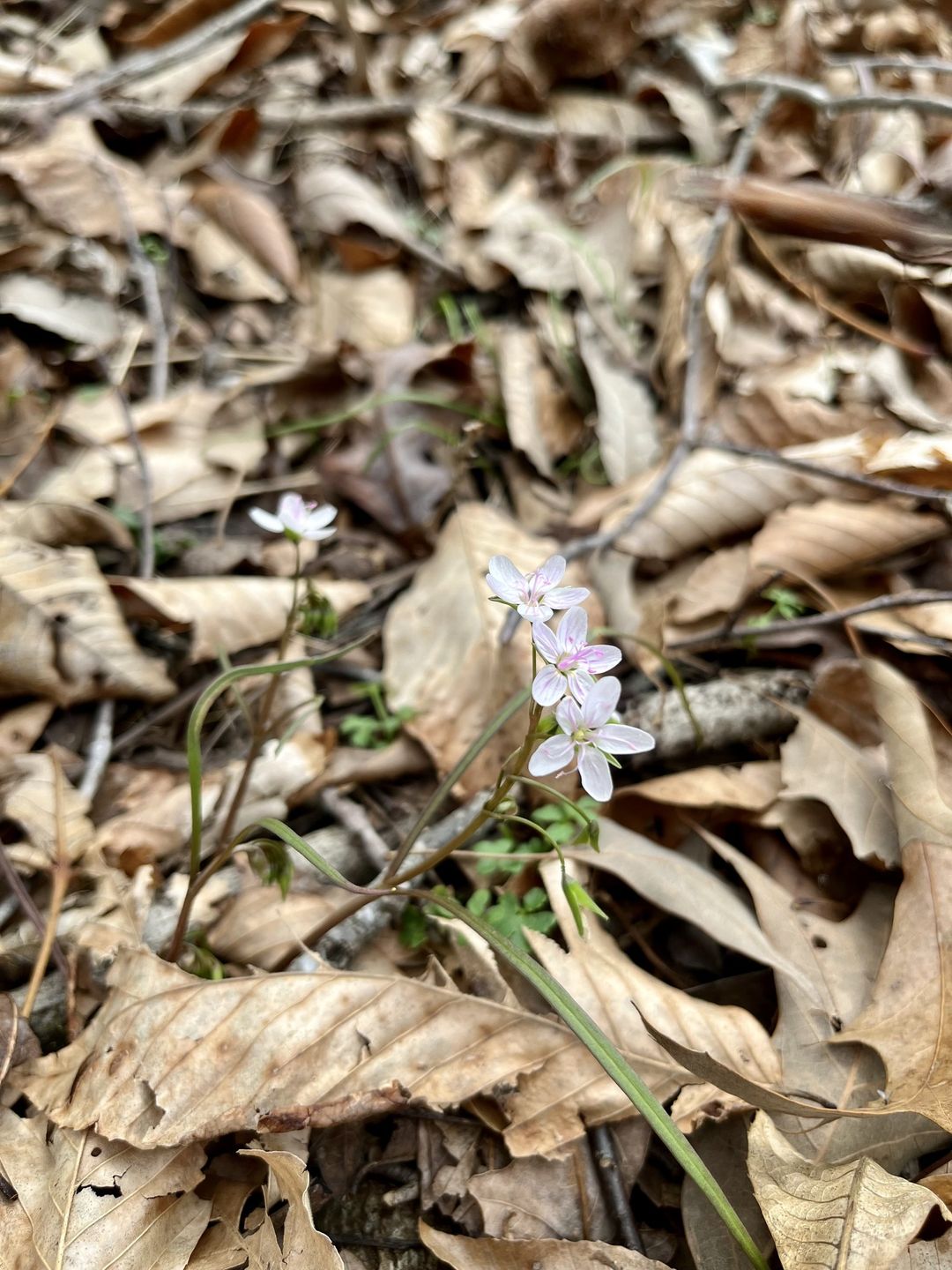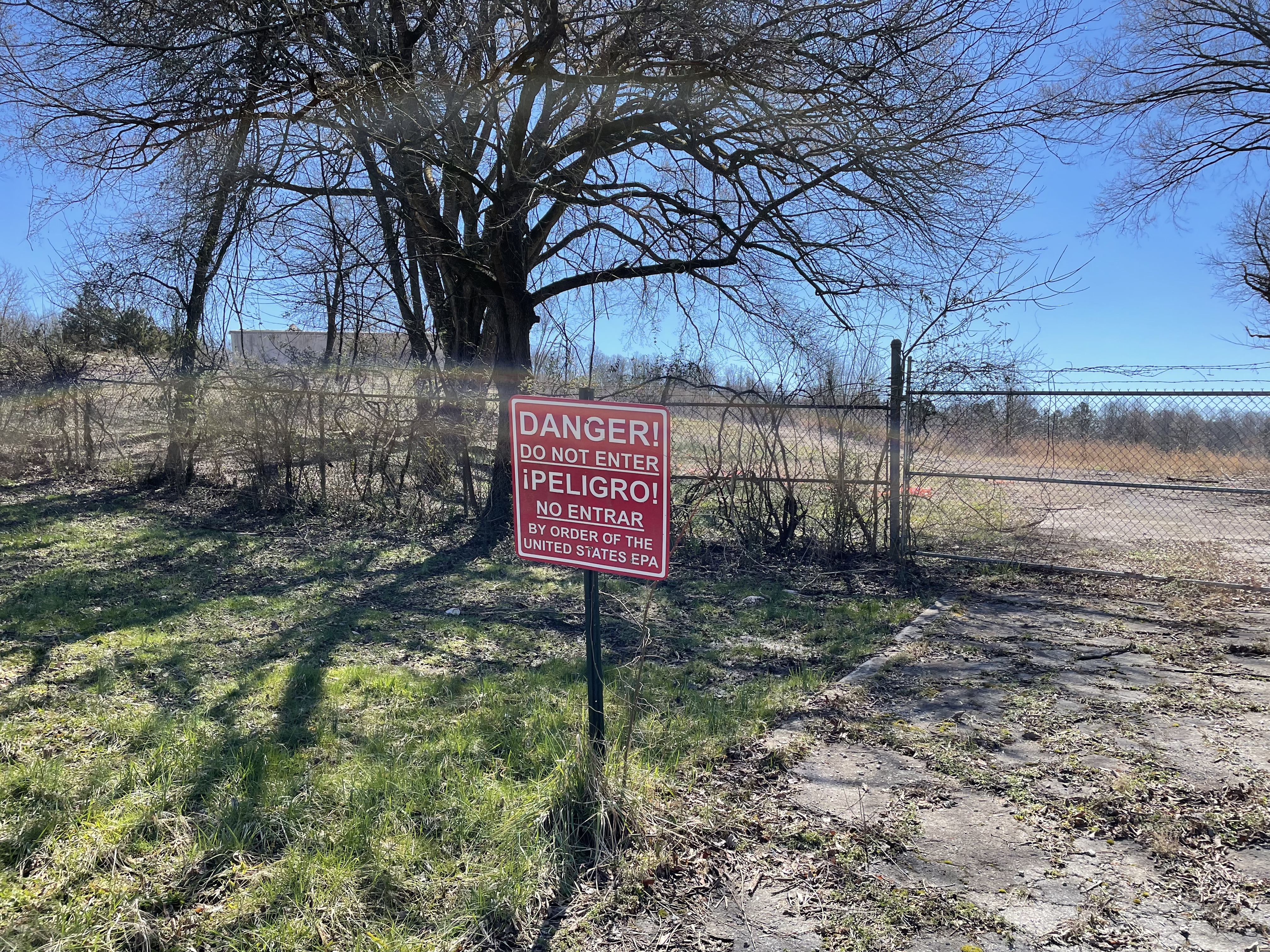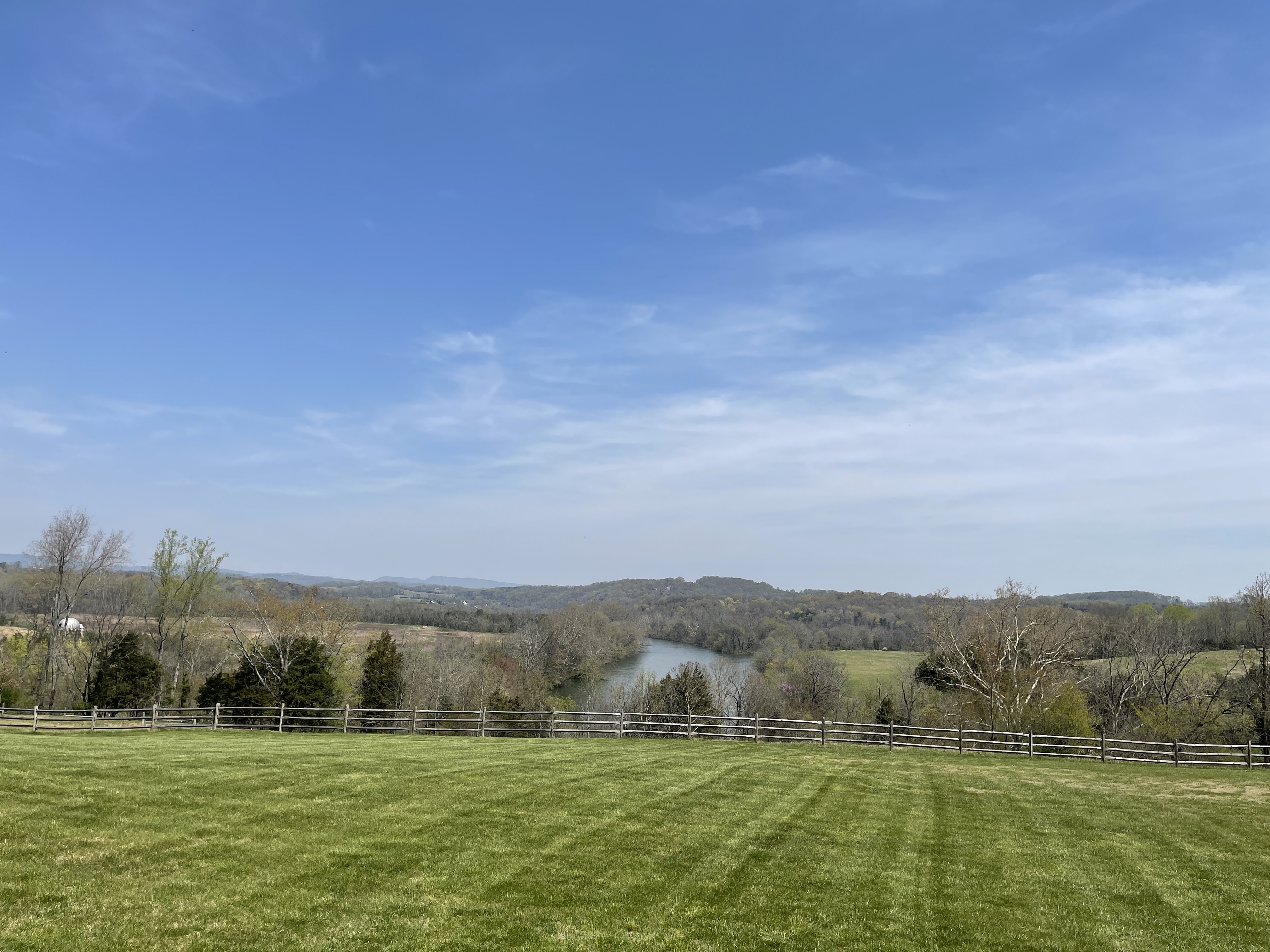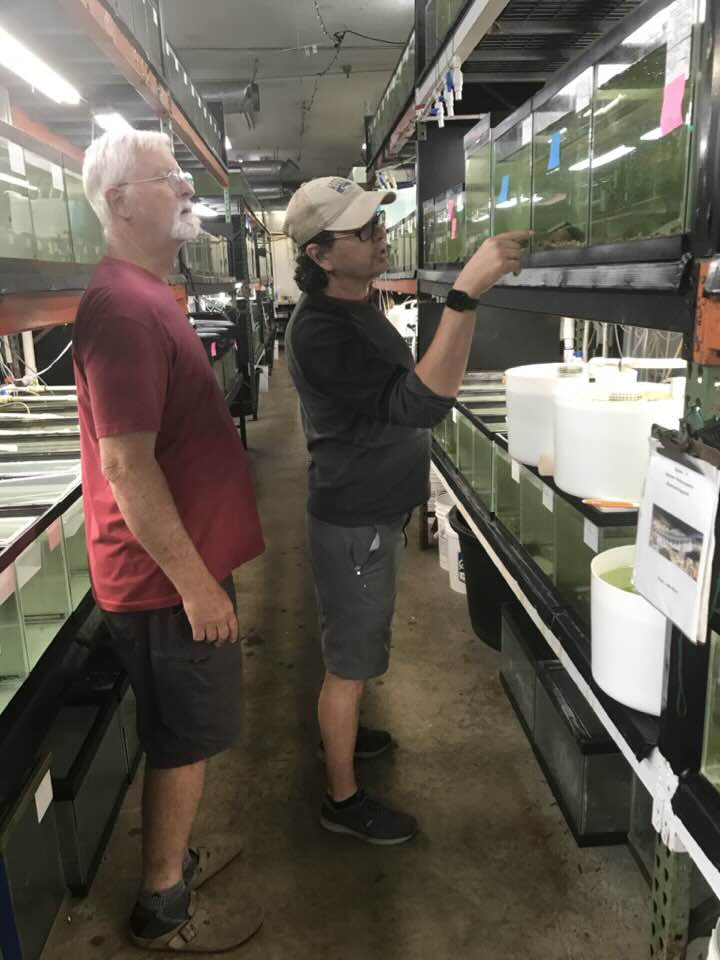
Earth (254)
Planet Earth, the only speck in the Universe confirmed by humans to have evolved higher forms of life. Watch NASA's phenomenal movie summarizing Life on Earth.
2016 Smokies wildfires: Six years later, the good and the bad come into focus as natural recovery continues
Written by Ben Pounds Journalists and park officials document damage from the November 2016 wildfires that killed at least 15 people and left hundreds of dwellings and businesses in ruins. Thomas Fraser/Hellbender Press via Knoxville Mercury
Journalists and park officials document damage from the November 2016 wildfires that killed at least 15 people and left hundreds of dwellings and businesses in ruins. Thomas Fraser/Hellbender Press via Knoxville Mercury
How the 2016 Great Smoky Mountains National Park wildfire affected salamanders and other life, six years on
GATLINBURG — The disastrous Chimney Tops 2 wildfire of 2016 occurred some six years ago, but researchers are still looking at its ecological effects.
The Discover Life in America 2023 Colloquium brought together researchers this month from different fields and universities to present findings on research in Great Smoky Mountains National Park.
Researchers presented on many topics, ranging from trout to the history of the Mingus family in the park.
One such presentation, the first of the day, from William Peterman, associate professor in wildlife ecology and management at Ohio State University, focused on the effects wildfires had on salamander populations, which he described as negative.
Other presenters touched on the wildfire’s effects as well, including its effects on vegetation and its beneficial effects on the diversity of bird species.
“Smoky Mountains is the self-proclaimed salamander capital of the world,” Peterman said. He focused his study on the plethodontid family of salamanders, which breathe through their skin.
“Kind of think of them as a walking lung,” he said.
Get a free virtual science lesson in the Smokies this Thursday
A rundown about science efforts in Great Smoky Mountains National Park is set for March 2.
You can learn about myriad scientific studies ongoing in the Smokies from the comfort of your own home.
The park and Discover Life in America are presenting this virtual event from 9 a.m. until 4 p.m. Register for free on Zoom.
Attendees will “learn about a wide variety of scientific topics, from natural history and weather to geology and more, from researchers currently working in the Smokies,” according to an announcement from DLIA.
The schedule is likely to change, but a tentative schedule is available on the DLIA website.
— Ben Pounds
Harbingers of spring emerge. Keep faith in the wildflowers.
Written by Shelby Lyn Sanders Virginia beauty (Claytonia virginica) blooming in the woods reminds us winter is spinning away. Shelby Lyn Sanders
Virginia beauty (Claytonia virginica) blooming in the woods reminds us winter is spinning away. Shelby Lyn Sanders
First probing plants and flowers are a sign that winter always ends
There are few who would count winter as their favored time of year, and it is true that one must look harder to find the beauty in a landscape that by all accounts appears forlorn and void of life. But with about a month until the calendar tells us that it is officially spring, winter’s grip is yielding to renewal. It is a time of year that quickens the heartbeat of every naturalist.
The calls of golden-crowned kinglets begin to intermingle with those of the spring peepers, a frog so tiny that it is hard to imagine them capable of such emphatic emissions of sound, and last year’s marcescent American beech leaves preside over persistent, unfurling green lives that would be missed were it not for a careful eye and a curious heart.
The wait has been long, but worth it. With the first sighting of a blooming Virginia spring beauty, the ephemeral wildflower season begins, marking the start of another growing season, another months-long love story spent in awe of nature until the last asters of fall have gone to seed.
For every thing there is a season, and for lovers of the wild, that season is all of them.
 A bloodroot (Sangiuinaria canadensis) bloom is seen here in Norris Dam State Park on Feb. 19. John Johnson
A bloodroot (Sangiuinaria canadensis) bloom is seen here in Norris Dam State Park on Feb. 19. John Johnson
Infamous South Knoxville Superfund site will soon take first steps on long road to recovery
Written by Ben Pounds A sign warns against entry to the Smokey Mountain Smelters Superfund site off Maryville Pike in the Vestal community of Knoxville. Heather Duncan Nelson/Hellbender Press
A sign warns against entry to the Smokey Mountain Smelters Superfund site off Maryville Pike in the Vestal community of Knoxville. Heather Duncan Nelson/Hellbender Press
EPA plans to contain toxic waste and restore waterways; community group will offer guidance
KNOXVILLE — A crowd gathered in the South Knoxville Community Center to hear the Environmental Protection Agency’s long-awaited remediation plan for Smoky Mountain Smelting and its hazardous waste. Others tuned in via the Internet.
The meeting called by Vestal Community Organization took place Feb. 13. The EPA’s presentation and many questions focused on the former Smoky Mountain Smelting site at 1508 Maryville Pike near Montgomery Village Apartments.
Heather Duncan Nelson reported last year for Hellbender Press on the initial cleanup plans.
But citizens this week raised concerns about other contaminated former industrial properties along the same road. Vestal Community Organization plans to hold another meeting at 6 p.m. Feb. 22 to discuss and decide its position on these Maryville Pike properties.
“I was just thrilled and enamored by the way people were listening to the questions and answers,” said Eric Johnson with Vestal Community Organization, adding that he was referring both to the EPA and the citizens.
- superfund sites in knoxville
- smoky mountain smelters
- south knoxville superfund site
- ben pounds
- montgomery village apartments
- heather duncan superfund site
- smoky mountain smelting
- epa and knoxville superfund sites
- vestal community organization
- vestal knoxville
- south knoxville
- amelia parker
- witherspoon property knoxville
- maryville pike
Hellbent Profile: Amber Parker brings nature to the people
Written by JJ Stambaugh Ijams Nature Center Executive Director Amber Parker poses with opossum Opal. She was an Ijams animal ambassador for more than three years. “She came to us after her mother was hit by a car and Opal would fit in the palm of your hand. Sadly, Opal passed away earlier this year. Opossums live short lives, usually about three years, so Opal had a nice long one by opossum standards. She was beloved by all and we miss her.” Courtesy Ijams Nature Center
Ijams Nature Center Executive Director Amber Parker poses with opossum Opal. She was an Ijams animal ambassador for more than three years. “She came to us after her mother was hit by a car and Opal would fit in the palm of your hand. Sadly, Opal passed away earlier this year. Opossums live short lives, usually about three years, so Opal had a nice long one by opossum standards. She was beloved by all and we miss her.” Courtesy Ijams Nature Center
Each year more than 600,000 people visit Ijams Nature Center
This is the second installment of an occasional series, Hellbent, profiling citizens who work to preserve and improve the Southern Appalachian environment.
KNOXVILLE — On any given day, the parking lot at Ijams Nature Center in South Knoxville is packed with cars, trucks, and buses as folks of all ages flock to hike, climb, swim and paddle its 300-plus acres of protected wildlands.
Making sure the center’s 620,000 or so annual visitors have a positive experience interacting with Mother Nature requires dozens of full-time employees plus a generous contingent of volunteers. Ensuring the complex operation stays on course and within its $1.8 million operating budget is a tough job, but Ijams Executive Director Amber Parker has been doing it for six years now and has no desire to be doing anything else.
When Amber talks about Ijams she fairly bursts with giddy, infectious energy. This is a woman who has clearly found her place in the world, and even a brief walk along any of the center’s 21 trails makes one wonder if the land itself hasn’t responded in like fashion to her devotion.
The crucial Amazon rainforest is nearing a point of no return
NYT: Decades of extraction have left the South American rainforest at a “tipping point.”
The Amazon has long served as a vast carbon sink, even as vegetation pumped oxygen into the atmosphere to the point it was called the “lungs of the Earth.”
But vast deforestation, despite calls to save the Amazon that originated decades ago, portends profound changes in the ecology of the huge, increasingly fragmented forest that lies mainly within Brazil.
“Just in the past half-century, 17 percent of the Amazon — an area larger than Texas — has been converted to croplands or cattle pasture. Less forest means less recycled rain, less vapor to cool the air, less of a canopy to shield against sunlight,” according to a report from Alex Cuadros.
“In one study, a team led by the researcher Paulo Brando intentionally set a series of fires in swaths of forest abutted by an inactive soy plantation. After a second burn, coincidentally during a drought year, one plot lost nearly a third of its canopy cover, and African grasses — imported species commonly used in cattle pasture — moved in.”
Updated 1/3: Conservationists express dismay as Feds conclude ‘no significant impact’ from construction of Wears Valley mountain bike complex
Written by JJ Stambaugh
Feds clear 14-mile mountain bike trail network off Foothills Parkway, but no funding is secured
GATLINBURG — Those who logged protests against a National Park Service plan to carve a 14-mile mountain bike trail network through the forest off Foothills Parkway said they still opposed the plan despite federal conclusions it would not adversely impact the natural environment of the area.
“I’m very disappointed,” said Donna Edwards, an outspoken conservationist who lives in Walland and participated in the public scoping process. “What are (the) reasons for choosing the alternative with the largest footprint and greatest environmental impact?
“I fail to understand why mountain bikers’ needs are considered to be more important than those of birders and hikers, considering the extensive mountain bike trail networks in other areas of East Tennessee.”
She said arguments against approving the Wears Valley mountain bike trails were wise and well documented.
Here is the original Hellbender Press story:
A proposed off-road bike trail in the Wears Valley section of the Foothills Parkway that would be operated by the National Park Service has overcome a procedural hurdle but appears to be no closer to actually being built due to a lack of funding.
An environmental assessment to determine the project’s potential impact on wildlife and the environment led to an official “Finding of No Significant Impact” (FONSI), park officials said in a press release issued Thursday.
“We understand the public’s desire to have a purpose-built bike trail, and this marks a step for potential future development of a trail in Wears Valley,” said Cassius Cash, superintendent of the Great Smoky Mountains National Park. “Having the signed FONSI allows us the opportunity to explore potential funding paths for both the construction and the annual operational costs.”
- wears valley mountain biking proposal
- mountain bike park
- mountain biking in knoxville
- smokies mountain biking
- can you mountain bike in the smokies
- jj stambaugh
- east tennessee mountain biking
- foothills parkway
- cassius cash
- bike trail
- environmental assessment
- great smoky mountains national park
- offroad biking
- public comment
- recreational development
Updated 12/27: Temperatures climb and snow melts as bitter cold finally moves out of Southern Appalachians
Written by JJ Stambaugh
Southern cities emerge from frigid airmass after Christmas weekend of brutal cold and snow
KNOXVILLE — Temperatures rose above freezing on Tuesday for the first time since Dec. 23 following a weekend bout with historic cold, high winds, burst water and sewage lines and power outages. The chaos was punctuated with unexpectedly potent snowfall Dec. 26 on frigid roadways that snarled traffic in the city and metro area.
The snow came in the wake of a brutal cold front that first moved into the region in the early hours Friday morning.
Snow didn’t start falling until Monday afternoon, and by sunrise Tuesday between .5 and 2 inches of the white stuff had blanketed the area, falling upon already frigid roadways.
Public safety officials across the region urged motorists to stay home, and numerous government offices either closed or got off to a late start Tuesday due to icy roads.
Both the Knoxville Police Department and Knox County Sheriff’s Office activated their Severe Weather plans, which meant that officers would only respond to emergencies and wrecks with injuries.
Knoxville Urban Wilderness will be love at first sight
Written by JJ Stambaugh Trails at Baker Creek Preserve. Visit Knoxville
Trails at Baker Creek Preserve. Visit Knoxville
City cultivation of urban nature amenities proceeds apace
KNOXVILLE — The latest phase in a multimillion dollar plan to turn the southern end of the James White Parkway into an integral part of the city’s Urban Wilderness officially kicked off Monday afternoon (Dec. 19).
Numerous officials, including Mayor Indya Kincannon, showed up for the groundbreaking of the Baker Creek Pavilion, a key component of the ambitious project.
The city is pouring $2.7 million into the Baker Creek area of the Urban Wilderness Gateway Park, which will offer public restrooms, a picnic area and plenty of parking.
Updated: Smokies crews recover drowned Knoxville kayaker
TOWNSEND — Smokies recovery teams on Monday found the body of Carl Keaney, 61, of Knoxville, in the Little River.
Keaney was last seen kayaking the Sinks during high flow when he vanished under water, prompting calls to Great Smoky Mountains National Park rangers who, along with other local crews, proceeded to search for his body for three days.
Here’s the previous Hellbender Press report:
Teams are searching for a missing kayaker in what Great Smoky Mountains National Park officials are now calling a “recovery operation” after a 61-year-old man disappeared underwater while boating above the Sinks on Little River. High water levels from recent heavy rains are making search and recovery difficult.
“Around 3:40 p.m. on Friday, Dec. 16 Great Smoky Mountains National Park dispatch received a call that a 61-year-old man had disappeared underwater while kayaking above The Sinks and did not resurface,” according to a news release from the park.
8 billion people and counting in the face of climate change
Written by Maureen Lichtveld Flooding is seen outside a popular hotel in Pakistan following historic and devastating flooding linked largely to the melting of highland glaciers. Wikipedia Commons
Flooding is seen outside a popular hotel in Pakistan following historic and devastating flooding linked largely to the melting of highland glaciers. Wikipedia Commons
Global population growth promises a drastic spike in public health emergencies
This story was originally published by The Conversation. Maureen Lichtveld is dean of the School of Public Health at the University of Pittsburgh.
There are questions that worry me profoundly as an environmental health and population scientist.
Will we have enough food for a growing global population? How will we take care of more people in the next pandemic? What will heat do to millions with hypertension? Will countries wage water wars because of increasing droughts?
These risks all have three things in common: health, climate change and a growing population that the United Nations determined passed 8 billion people in November 2022, which is double the population of just 48 years ago.
- climate change
- human population
- how many people live on earth
- the conversation
- public health challenges and climate change
- population growth
- maureen lichtveld
- university of pittsburgh school of public health
- infectious diseases
- drought
- food and water security
- extreme heat
- population growth and public health
- dengue
- malaria
- human infectious diseases
- air quality
You can help Knoxville become a wood-powered tree city
Written by JJ Stambaugh This is a basic breakdown on the social benefits associated with robust tree canopy in cities, including the city center of Knoxville, shown here. Knoxville City Government
This is a basic breakdown on the social benefits associated with robust tree canopy in cities, including the city center of Knoxville, shown here. Knoxville City Government
City kicks off ambitious project to expand the tree canopy that benefits us all
KNOXVILLE — The people in this city sure seem to love their trees.
There is at least one tree for every two people who live within the city limits, but officials say they want to add even more over the next 20 years.
How many should be planted is currently up in the air, as is the right mix of species and where they should go.
Those are just some of the questions that will be answered in coming months as the Knoxville Urban Forest Master Plan is developed by officials from the city and the non-profit group Trees Knoxville in conjunction with several other agencies and interested citizens.
- knoxville tree cover
- knoxville botanical garden and arboretum
- knoxville tree master plan
- keep knoxville beautiful
- knoxville urban forest master plan
- jj stambaugh
- trees knoxville
- tennessee division of forestry
- urban canopy works
- what is urban canopy
- urban canopy
- urban forest
- indya kincannon
- madeline rogero
- kasey krause
- what does an urban forester do
- island home
- fountain city
- are there lots of trees in knoxville

Contribute to the master plan to grow tree canopy in Knoxville
KNOXVILLE — No matter where you are in the city, you’re not far from a patch or two of trees.
These copses range from small groupings of oaks or dogwoods that are commonly used to mark property boundaries to lush belts of temperate mixed-hardwood forest that sprawl across hundreds of acres.
While Knoxville may be blessed with an abundance of these urban forests, many local residents and leaders believe it’s nowhere near enough.
- knoxville mayor sustainability
- knoxville tree cover
- knoxville tree master plan
- jj stambaugh
- trees knoxville
- knoxville urban wilderness
- knoxville urban forest master plan
- knoxville urban tree canopy assessment
- knoxville
- urban forest
- canopy
- public participation
- stakeholder input
- kasey krause
- urban forester
- tennessee division of forestry
- keep knoxville beautiful
Latest Foothills Land Conservancy easement preserves history, farm and forest
Written by Shelby Lyn Sanders
Jefferson County views and values protected with Foothills Land Conservancy easement
Shelby Lyn Sanders is a field biologist with Foothills Land Conservancy.
JEFFERSON CITY — Can you see the Sleeping Lady?
We are standing on the back porch of the historic Isaac McBee House, built in 1850, and I follow Jack Kramer’s gaze across the back lawn, over McBee Island flanked by the cold March waters of the Holston River, and to the mountains in the distance.
“She’s easier to see this time of year,” he says, because those distant hills are unobscured by the foliage of trees still nakedly waiting for spring. Indeed, I can see her — she lies with her head to the west and her toes stretched out to the east, the hills forming the rise and fall of her body.
Park releases Smokies air-tour plan
 Commercial air tour routes over Great Smoky Mountains National Park
Commercial air tour routes over Great Smoky Mountains National Park
GATLINBURG — Great Smoky Mountains National Park and other federal officials completed a management plan to formally regulate aircraft tours over the park.
Don’t expect much to change in the skies over the park: The plan allows 946 air tours a year by select helicopter operators, unchanged from the average number of annual flights recorded from 2017 to 2019. Flights may only operate from two hours after daybreak to two hours before sundown.
“The plan establishes measures to protect park resources including natural and cultural resources, preservation of wilderness character, and visitor experience,” according to Smokies officials. Flights will be restricted to six routes over the park, and must maintain an elevation above 2,700 feet of the highest terrain. Cades Cove is off limits, as are several historical sites, including the Walker Sisters Cabin.
Air tours, often to the dismay of many hikers and others, have occurred over the park for most of its history, but no formal flight guidelines were in place.
“We appreciate the tireless work that went into the development of the Smokies air tour management plan,” said Superintendent Cassius Cash. “The plan incorporates several improvements that allow continued air tour activity, while at the same time better protecting the wilderness character of the backcountry, wildlife populations, natural soundscapes, and the visitor experience in historic areas like Cades Cove.”
Eastern Band of Cherokee Indian members provided notable input into the development of the plan, which will go into effect in 90 days from Dec.3.
Hellbender Press previously reported on development of the Smokies aircraft management plan.
More...
Whiskey business: Help UT save white oaks for your liquor drinks
Written by Ben Pounds
UT forestry efforts benefit whiskey and ecological chasers
KNOXVILLE — Volunteers, distilleries and two universities came together this fall to collect white oak acorns to ensure the survival of the species for commercial and ecological purposes.
It was a key part of a conservation effort started by distilleries worried about the future of oak barrels and casks used to age whiskey and bourbon.
It’s about more than that though, as white oaks have many uses not just for people but for an estimated 2,000 other species, including bats, birds, turkeys, deer, rabbits and hundreds of butterflies and moths. But because the trees are slow to grow, they may be at risk, especially as the region grapples with the uncertain outcomes of climate change.
Real or fake Christmas trees? Like most things in life, the answer is a function of time.
Nature Conservancy: Keep it real
Nothing beats the fresh aroma of a live Christmas tree, if you are into that kind of thing, but both real and fake trees carry their own load of sustainability pros and cons.
Live trees offer holiday beauty and scent and are a traditional addition to households. But they are harvested from a vast monoculture and require multiple levels of carbon-burning transport.
Artificial trees offer convenience, and can be reused for a decade. But they are largely made of plastic, manufactured in places with unsavory human rights records, and require global transit.
This article breaks it down pretty well. Maybe it’s just best to not have a Christmas tree?
 A TVA ash pond at Watts Bar ruptured with disastrous consequences in December 2008. Wikipedia
A TVA ash pond at Watts Bar ruptured with disastrous consequences in December 2008. Wikipedia
Report contends coal plant operators are shirking responsibilities on ash cleanup
This story was originally published by Tennessee Lookout.
NASHVILLE — In the wake of major coal ash spills from power plant containment ponds in Tennessee and into the Dan River along the North Carolina and Virginia border, the federal Environmental Protection Agency in 2015 laid out the first federal rules for managing the ash, one of the nation’s largest waste streams, and the toxins it contains.
But more than seven years later, few utilities and other owners responsible for the often unlined pits where billions of tons of ash leach heavy metals and other toxins into groundwater are planning comprehensive cleanups, per a report released this month by a pair of environmental groups.
Bo Baxter takes helm of the crucial nonprofit Conservation Fisheries
Written by Thomas Fraser Bo Baxter (right) and JR Shute examine one of many tanks hosting native fish species at Conservation Fisheries in this photo taken last year. Thomas Fraser/Hellbender Press
Bo Baxter (right) and JR Shute examine one of many tanks hosting native fish species at Conservation Fisheries in this photo taken last year. Thomas Fraser/Hellbender Press
JR Shute and Pat Rakes declare semi-retirement, hand over operations to Hellbender Press board member
KNOXVILLE — A career biologist with deep experience in Southern Appalachian aquatic systems is the new captain of Conservation Fisheries.
The highly productive and robust nonprofit aims to secure, augment, preserve and protect the aquatic environs of the Southeast, namely through the reintroduction of native fish to areas they once inhabited
Bo Baxter spent 25 years as a conservation biologist at the Tennessee Valley Authority. He became an active board member at Conservation Fisheries, Inc. (CFI) upon his retirement from TVA. He soaked up knowledge of its operations and was named executive director as of Oct. 20. His path comes full circle, as he was one of the first paid staff members at Conservation Fisheries, some three decades ago.
Baxter is a member of the Hellbender Press editorial board.